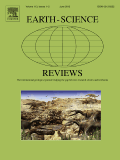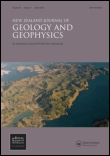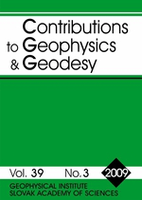
EARTH-SCIENCE REVIEWS
Scope & Guideline
Fostering scientific dialogue through high-quality reviews.
Introduction
Aims and Scopes
- Geological Processes and Tectonics:
The journal focuses on geological processes, including the formation and evolution of the Earth's crust, tectonic movements, and the geological history of various regions. - Environmental Changes and Impacts:
Research on how geological and climatic changes impact the environment, including studies on sedimentation, erosion, and natural hazards. - Geochemical and Geophysical Investigations:
The journal includes studies that utilize geochemical and geophysical methods to explore subsurface characteristics, mineral resources, and environmental monitoring. - Paleoenvironmental and Paleoclimatic Studies:
It emphasizes research that reconstructs past environments and climates using geological records, providing insights into historical climate changes and their impacts. - Innovative Technologies in Earth Sciences:
The incorporation of advanced technologies such as machine learning, remote sensing, and modeling techniques to address complex geological and environmental issues.
Trending and Emerging
- Climate Change and Its Geological Impacts:
There is a growing emphasis on understanding the geological implications of climate change, including studies on sedimentary responses, permafrost dynamics, and carbon storage. - Carbon Capture and Storage (CCS) Technologies:
Research on CCS technologies is increasingly popular, focusing on geological formations suitable for long-term CO2 storage and the mechanisms involved in trapping carbon. - Interdisciplinary Approaches to Earth Sciences:
Emerging trends show an increasing integration of various disciplines, such as biology, chemistry, and engineering, to tackle complex earth science problems like ecosystem responses to geological changes. - Machine Learning and Big Data Applications:
The application of machine learning and big data analytics in geological studies is gaining traction, facilitating the analysis of large datasets for improved modeling and prediction. - Natural Hazards and Disaster Risk Reduction:
There is a heightened focus on understanding natural hazards, their geological underpinnings, and developing strategies for disaster risk reduction, particularly in vulnerable regions.
Declining or Waning
- Traditional Mineralogy:
Research focused solely on traditional mineralogy has decreased as interdisciplinary approaches gain traction, integrating mineralogy with geochemistry and environmental science. - Static Geological Models:
There is a waning interest in static geological models that do not incorporate dynamic processes or real-time data, as the field shifts towards more dynamic and predictive modeling approaches. - Local Case Studies:
Publications focusing on isolated local case studies are becoming less frequent compared to broader, integrative studies that provide global or regional insights. - Single-Dimensional Environmental Assessments:
Research that only presents single-dimensional assessments of environmental issues is declining in favor of multi-faceted studies that address complex interactions.
Similar Journals

NEW ZEALAND JOURNAL OF GEOLOGY AND GEOPHYSICS
Unveiling the Earth's Secrets Through Rigorous Research.NEW ZEALAND JOURNAL OF GEOLOGY AND GEOPHYSICS, published by Taylor & Francis Ltd, stands as a prominent forum dedicated to the interdisciplinary exploration of geological and geophysical phenomena. With an impact factor that situates this journal in the prestigious Q1 category across key subjects—namely Earth and Planetary Sciences, Geology, and Geophysics—it is a critical resource for researchers, professionals, and students alike. The journal has been operational since 1958 and continues to contribute valuable insights into the complexities of the Earth's processes. Although it does not currently offer Open Access options, its broad readership benefits from an extensive archive of high-quality research findings that span from 1958 to 2024. Located in the United Kingdom, the journal remains a pivotal player in advancing the understanding of Earth's systems, making significant contributions to both academic inquiry and practical applications in the field.

GEOLOGICAL QUARTERLY
Connecting Minds in Earth Sciences Since 2000.GEOLOGICAL QUARTERLY, published by the Polish Geological Institute, is a respected journal in the field of geology, offering insights into Earth and planetary sciences since its inception in 2000. With an ISSN of 1641-7291 and an E-ISSN of 2082-5099, this journal serves as a vital platform for researchers, professionals, and students seeking to expand their knowledge in geological disciplines. The journal is positioned in Q3 within the geology category as of 2023 and ranks #172 out of 321 in Scopus, placing it in the 46th percentile among its peers. Although currently not an open-access publication, GEOLOGICAL QUARTERLY reflects the policy of fostering scientific communication and collaboration by disseminating valuable geological research. Its commitment to publishing original articles, reviews, and technical notes ensures that it plays a significant role in advancing geological science and its applications within the academic community. With its base in Warsaw, Poland, the journal stands as an important resource for anyone engaged in or studying the Earth sciences.

DOKLADY EARTH SCIENCES
Exploring the Frontiers of Geoscience ResearchDOKLADY EARTH SCIENCES is a reputable journal published by MAIK NAUKA/INTERPERIODICA/SPRINGER, focusing on the dynamic field of Earth and Planetary Sciences. With an ISSN of 1028-334X and E-ISSN 1531-8354, this journal offers a platform for researchers to disseminate their findings and insights that contribute to our understanding of Earth systems over a continuous publishing span from 1998 to 2024. It currently holds a Q3 quartile ranking in the Earth and Planetary Sciences category, reflecting an emerging yet significant impact within its field, evidenced by its Scopus ranks where it stands at 123rd in general Earth sciences and 113th in miscellaneous Earth sciences. DOKLADY EARTH SCIENCES aims to bridge research gaps and foster collaboration among a diverse audience including researchers, professionals, and students committed to advancing knowledge in geoscience. The journal stands as a vital resource for those seeking to explore contemporary challenges and innovations within the realm of Earth sciences.

EARTH AND PLANETARY SCIENCE LETTERS
Fostering Scholarly Dialogue on Planetary ProcessesEARTH AND PLANETARY SCIENCE LETTERS, published by ELSEVIER, stands as a premier academic journal in the fields of Earth and Planetary Sciences, Geochemistry and Petrology, Geophysics, and Space and Planetary Science. Since its inception in 1966 and continuing to 2024, the journal has consistently maintained an impressive reputation, ranking in the top quartile (Q1) across several categories, highlighting its vital role in advancing scholarly research. With a Scopus ranking of #4 in both Geophysics and Geochemistry and Petrology, and a notable 97th percentile in multiple Earth sciences categories, EARTH AND PLANETARY SCIENCE LETTERS provides a platform for groundbreaking research, encouraging rigorous investigation and dissemination of knowledge. While not available as an Open Access publication, the journal remains highly accessible to academics and professionals worldwide, providing invaluable insights and fostering discussions that influence the future of Earth sciences. Whether you are a researcher, educator, or student, this journal is a crucial resource for understanding our planet and its processes.

Boletim Paranaense de Geociencias
Exploring the Depths of Geological KnowledgeBoletim Paranaense de Geociencias, published by UNIV FED PARANA, EDITORA, serves as a vital platform for advancing knowledge in the field of Earth and Planetary Sciences, contributing significantly to discussions surrounding geological research and discovery. With an ISSN of 0067-964X, this esteemed journal primarily features studies that reflect regional geological contexts while also addressing wider planetary science issues. Although it currently holds a Q4 category quartile ranking and a 15th percentile in the Scopus rankings within its field, the journal remains committed to disseminating valuable insights and fostering academic discourse. This is of particular significance as it tirelessly updates its publication scope, aiming to include contributions from diverse geological studies both regionally and globally. While it operates on a printed basis, researchers and students alike will find the Boletim’s progressive discussions critical for understanding the dynamic processes shaping our planet.

AGU Advances
Bridging Knowledge Across Earth and SpaceAGU Advances, published by the American Geophysical Union, is a premier Open Access journal established in 2020, dedicated to advancing the field of Earth and Planetary Sciences. With an impressive Q1 ranking in the 2023 category of Earth and Planetary Sciences (miscellaneous) and a Scopus rank of #81/195, it serves as a vital platform for researchers, professionals, and students to share their findings and innovations. The journal fosters a collaborative environment, encouraging interdisciplinary approaches and high-quality research that addresses the fundamental questions of our planet and beyond. With its commitment to accessibility, AGU Advances ensures that cutting-edge research is available to a global audience, supporting the dissemination of knowledge that is crucial for addressing current and future scientific challenges. For those keen on contributing to or accessing groundbreaking studies in this dynamic field, AGU Advances is an invaluable resource.

Contributions to Geophysics and Geodesy
Pioneering Research in Earth Sciences Since 1992Contributions to Geophysics and Geodesy is a distinguished open access journal dedicated to advancing the field of geophysics and geodesy, published by the SLOVAK ACADEMY OF SCIENCES, EARTH SCIENCE INSTITUTE. With a rich publication history since its inception in 1992 and a commitment to open access since 2009, this journal serves as a vital platform for disseminating innovative research and critical insights in Earth sciences. Although it currently holds a Q4 ranking in the Geophysics category and is positioned in the 29th percentile, it continues to foster scholarly dialogue and enhance the visibility of significant findings in the community. Situated in Slovakia, the journal's address underscores its international reach and relevance. Researchers, professionals, and students alike will find valuable resources and perspectives within its pages, aiming to bridge gaps in knowledge and contribute meaningfully to the ongoing global discourse in geophysical sciences.

Vietnam Journal of Earth Sciences
Bridging Local Insights with Global Impact in Earth SciencesThe Vietnam Journal of Earth Sciences, ISSN 0866-7187, is a premier publication from the Publishing House Science and Technology based in Viet Nam, dedicated to fostering advancements in the field of Earth and Planetary Sciences. Operating under a Q2 ranking in the 2023 category of Earth and Planetary Sciences (miscellaneous) and positioned at Rank #62 out of 195 in its general category on Scopus, this journal serves as a critical platform for researchers, professionals, and students seeking to disseminate and engage with high-quality scientific findings. Despite being part of the non-open access model, the journal is committed to providing compelling content, encompassing a range of topics from geological hazards to environmental sustainability, ensuring its relevance and contribution to both local and international scientific communities. With coverage that spans from 2018 to 2024, the journal is poised to continue its role in addressing pressing Earth science issues and fostering collaborations among scholars in an increasingly interconnected world.

GEOSCIENCES JOURNAL
Innovating Solutions for a Sustainable Future.Welcome to the GEOSCIENCES JOURNAL, a pivotal publication in the fields of Earth and Planetary Sciences and Environmental Science, proudly presented by the Geological Society of Korea. Established in 1997, this journal has become a prominent platform for researchers, professionals, and students, offering a rich collection of peer-reviewed articles that explore a diverse array of geoscientific topics. With an impressive Q2 ranking in both Earth and Planetary Sciences and Environmental Science categories for 2023, it stands as an essential resource in the academic community. Though it operates under a traditional subscription model, GEOSCIENCES JOURNAL remains dedicated to advancing knowledge through rigorous research. Addressed from its headquarters in Seoul, South Korea, the journal aims to foster a deeper understanding of geosciences, encouraging innovation and collaboration in tackling today’s environmental challenges.

Geofizicheskiy Zhurnal-Geophysical Journal
Illuminating Complex Geophysical ChallengesGeofizicheskiy Zhurnal-Geophysical Journal, published by the esteemed S I Subbotin Institute of Geophysics, National Academy of Sciences of Ukraine, stands as a vital resource for professionals and researchers in the field of geophysics. With an ISSN of 0203-3100 and an E-ISSN of 2524-1052, this journal is recognized for its rigorous peer-reviewed articles that delve into various aspects of geophysical research, including seismic studies, geodynamics, and Earth surface processes. Although currently not under an open access model, the journal maintains a commitment to disseminating high-quality research, thereby enriching the global geophysical community. The publication aims to foster collaboration and knowledge transfer among scientists and engineers while addressing complex geophysical challenges in a rapidly evolving landscape. By engaging with cutting-edge research, readers can expect to uncover insights that advance both theoretical understanding and practical applications in geophysical science.